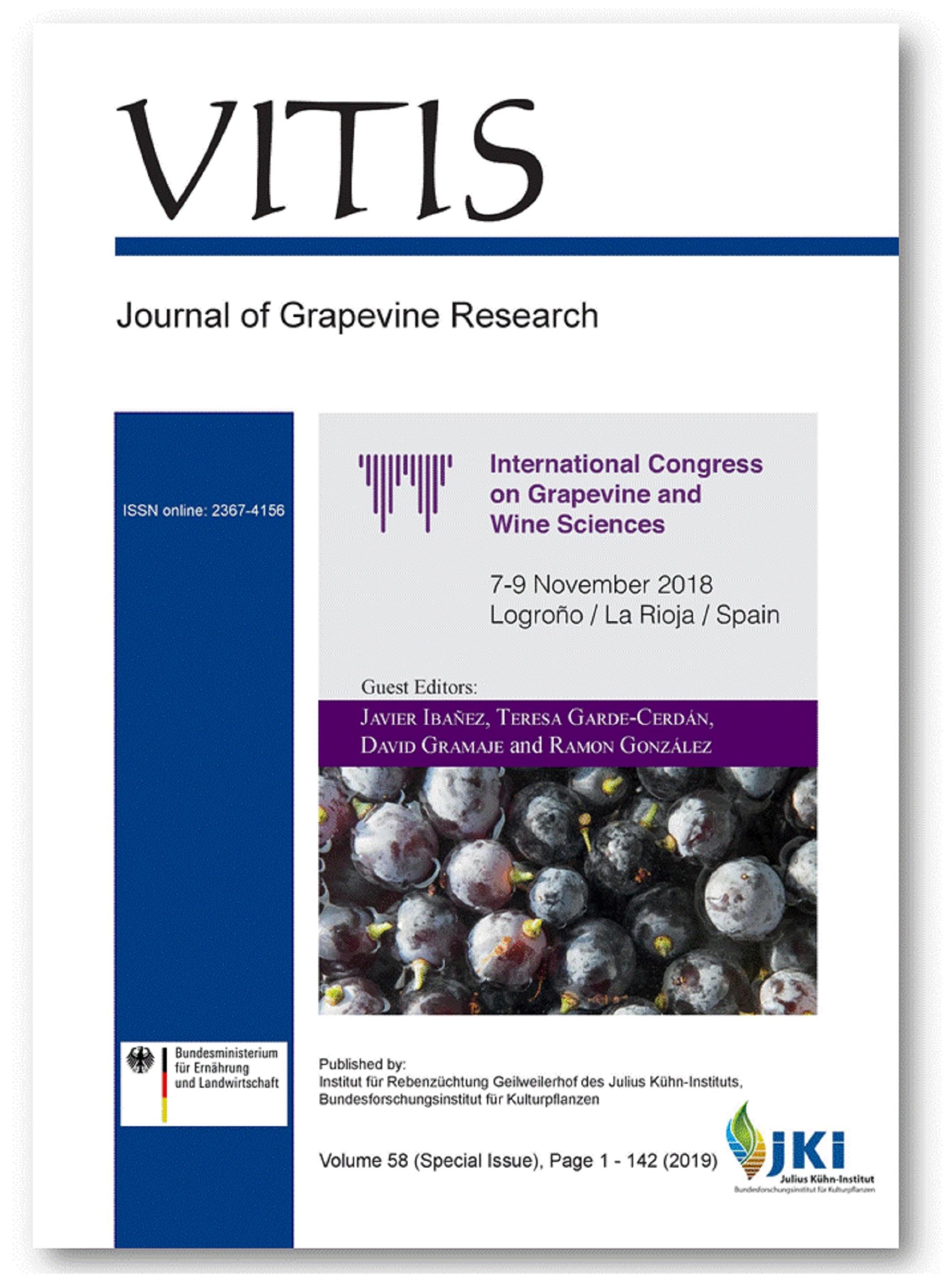Evaluation of the agronomic performance of 'Syrah' and 'Tempranillo' when grafted on 12 rootstocks
DOI:
https://doi.org/10.5073/vitis.2019.58.special-issue.111-118Keywords:
grapevine; vigour; yield; industrial quality; phenolic quality; Vitis vinifera L.Abstract
Beyond pest resistance, rootstocks significantly influence the performance of grapevine varieties. However, the effect of the rootstock is strongly affected by its interaction with the environment, and it is therefore necessary to evaluate their influence in a particular terroir. With the aim of evaluating the influence of 12 rootstocks on the agronomic performance of 'Syrah' and 'Tempranillo', a trial was established in 2011 and 2012 in Miranda de Arga (Navarra, Spain), under the typical environmental conditions of the Ebro Valley. Growth and yield, as well as industrial and phenolic maturity parameters were analysed during four consecutive seasons (2015-2018). Most rootstocks showed a similar performance with both varieties, not always following the trends reported in bibliography, which highlights the relevance of studying rootstocks in different conditions. 3309 C was the rootstock conferring the highest vigour, whereas the lowest were provided by 420 A MGt and 'Fercal'. The implications on grape composition were much more diverse, and were partially conditioned by yield. Results were obtained during the four first harvests of the vineyard, and could therefore change to some extent as the vineyard reaches stability.
Downloads
Published
Issue
Section
License
The content of VITIS is published under a Creative Commons Attribution 4.0 license. Any user is free to share and adapt (remix, transform, build upon) the content as long as the original publication is attributed (authors, title, year, journal, issue, pages) and any changes to the original are clearly labeled. We do not prohibit or charge a fee for reuse of published content. The use of general descriptive names, trade names, trademarks, and so forth in any publication herein, even if not specifically indicated, does not imply that these names are not protected by the relevant laws and regulations. The submitting author agrees to these terms on behalf of all co-authors when submitting a manuscript. Please be aware that this license cannot be revoked. All authors retain the copyright on their work and are able to enter into separate, additional contractual arrangements.



